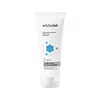What's inside
What's inside
 Key Ingredients
Key Ingredients

 Benefits
Benefits

 Concerns
Concerns

 Ingredients Side-by-side
Ingredients Side-by-side

Water
Skin ConditioningCocamidopropyl Betaine
CleansingGlycerin
HumectantSodium C14-16 Olefin Sulfonate
CleansingPEG-8
HumectantSodium Methyl Cocoyl Taurate
CleansingTrehalose
HumectantPropylene Glycol
HumectantSodium Benzoate
MaskingSodium Chloride
MaskingAcrylates/C10-30 Alkyl Acrylate Crosspolymer
Emulsion StabilisingAllantoin
Skin ConditioningSodium Lauroyl Oat Amino Acids
CleansingDisodium EDTA
PEG-120 Methyl Glucose Dioleate
EmulsifyingPentylene Glycol
Skin ConditioningBeta-Glucan
Skin ConditioningCitric Acid
BufferingCaprylyl Glycol
EmollientTetrasodium EDTA
Phenoxyethanol
PreservativeXylitylglucoside
HumectantAnhydroxylitol
HumectantEthylhexylglycerin
Skin ConditioningCaprylic/Capric Triglyceride
MaskingXylitol
HumectantDeoxyphytantriyl Palmitamide Mea
Skin ConditioningGlucose
HumectantHydrogenated Lecithin
EmulsifyingCeramide NP
Skin ConditioningCholesterol
EmollientWater, Cocamidopropyl Betaine, Glycerin, Sodium C14-16 Olefin Sulfonate, PEG-8, Sodium Methyl Cocoyl Taurate, Trehalose, Propylene Glycol, Sodium Benzoate, Sodium Chloride, Acrylates/C10-30 Alkyl Acrylate Crosspolymer, Allantoin, Sodium Lauroyl Oat Amino Acids, Disodium EDTA, PEG-120 Methyl Glucose Dioleate, Pentylene Glycol, Beta-Glucan, Citric Acid, Caprylyl Glycol, Tetrasodium EDTA, Phenoxyethanol, Xylitylglucoside, Anhydroxylitol, Ethylhexylglycerin, Caprylic/Capric Triglyceride, Xylitol, Deoxyphytantriyl Palmitamide Mea, Glucose, Hydrogenated Lecithin, Ceramide NP, Cholesterol
Ingredients Explained
These ingredients are found in both products.
Ingredients higher up in an ingredient list are typically present in a larger amount.
Cocamidopropyl Betaine is a fatty acid created by mixing similar compounds in coconut oil and dimethylaminopropylamine, a compound with two amino groups.
This ingredient is a surfactant and cleanser. It helps gather the dirt, pollutants, and other impurities in your skin to be washed away. It also helps thicken a product and make the texture more creamy.
Being created from coconut oil means Cocamidopropyl Betaine is hydrating for the skin.
While Cocamidopropyl Betaine was believed to be an allergen, a study from 2012 disproved this. It found two compounds in unpure Cocamidopropyl Betaine to be the irritants: aminoamide and 3-dimethylaminopropylamine. High-grade and pure Cocamidopropyl Betaine did not induce allergic reactions during this study.
Learn more about Cocamidopropyl BetaineSodium Benzoate is a preservative. It's used in both cosmetic and food products to inhibit the growth of mold and bacteria. It is typically produced synthetically.
Both the US FDA and EU Health Committee have approved the use of sodium benzoate. In the US, levels of 0.1% (of the total product) are allowed.
Sodium benzoate works as a preservative by inhibiting the growth of bacteria inside of cells. It prevents the cell from fermenting a type of sugar using an enzyme called phosphofructokinase.
It is the salt of benzoic acid. Foods containing sodium benzoate include soda, salad dressings, condiments, fruit juices, wines, and snack foods.
Studies for using ascorbic acid and sodium benzoate in cosmetics are lacking, especially in skincare routines with multiple steps.
We always recommend speaking with a professional, such as a dermatologist, if you have any concerns.
Learn more about Sodium BenzoateWater. It's the most common cosmetic ingredient of all. You'll usually see it at the top of ingredient lists, meaning that it makes up the largest part of the product.
So why is it so popular? Water most often acts as a solvent - this means that it helps dissolve other ingredients into the formulation.
You'll also recognize water as that liquid we all need to stay alive. If you see this, drink a glass of water. Stay hydrated!
Learn more about Water